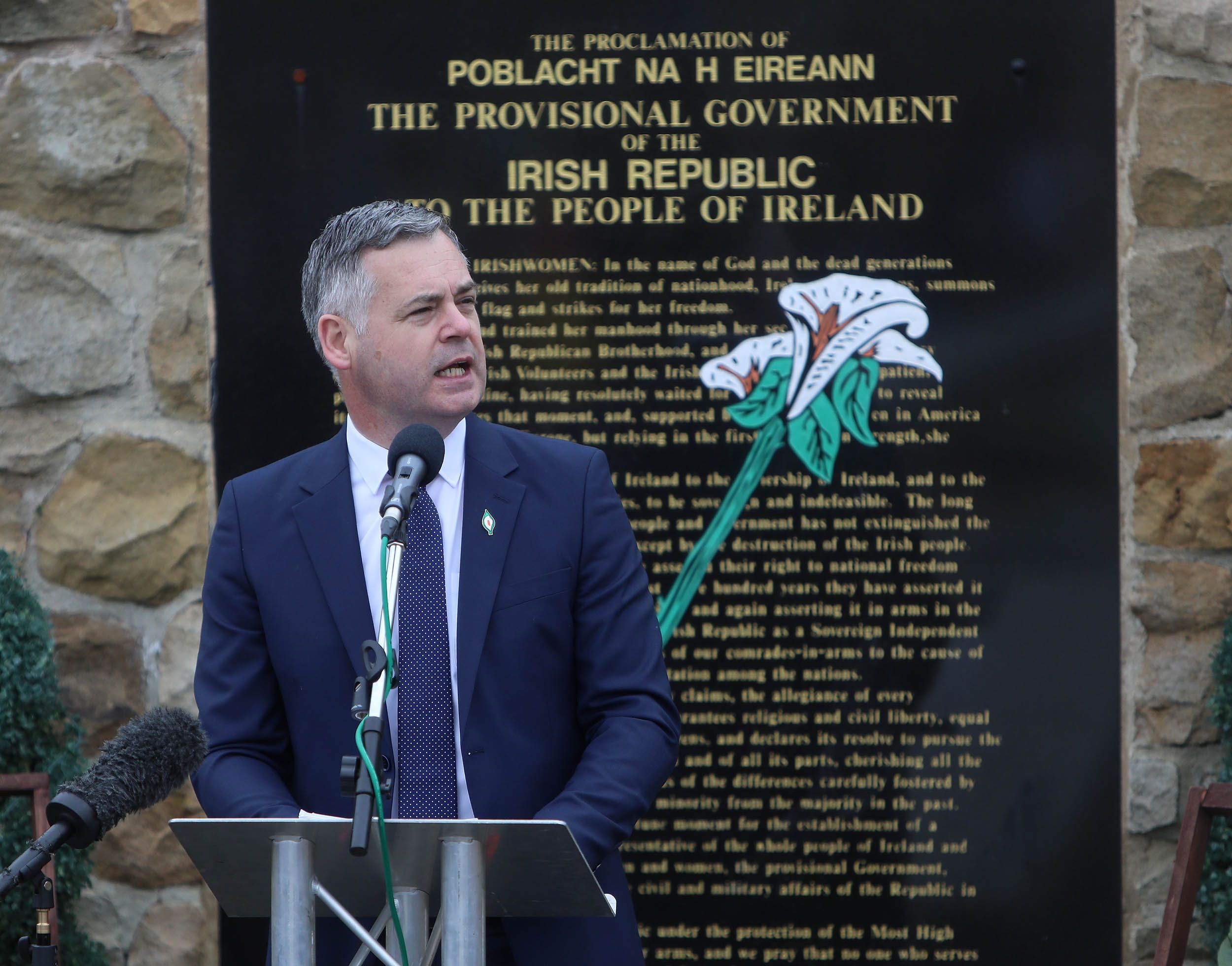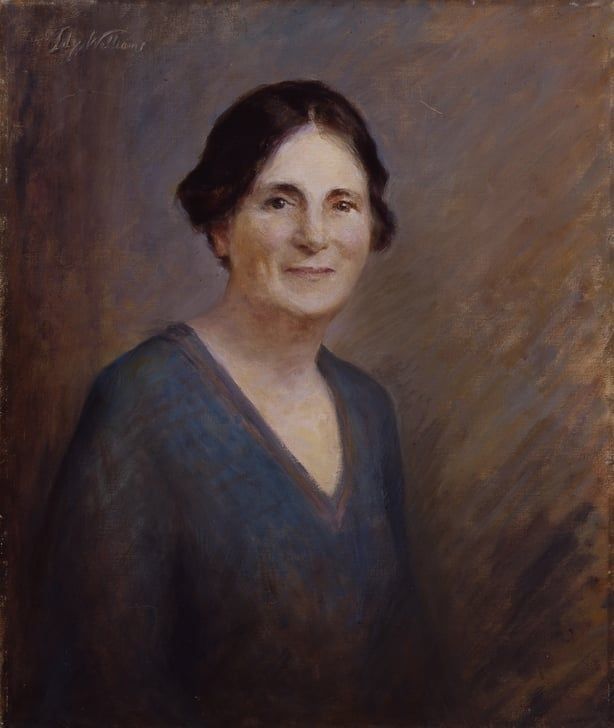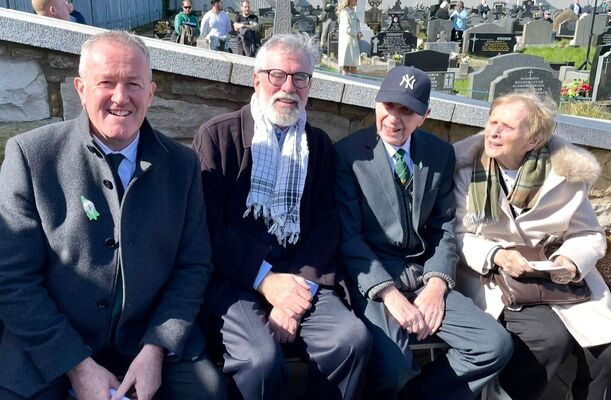I HOPE you all had an enjoyable Easter. Across the island and further afield commemorations were held at countless locations to remember those who fought in the 1916 Easter Rising and in all of the generations of the freedom struggle. The Belfast turnout was big and Pearse Doherty, who made an exceptional speech, was given a very warm welcome. I saw no mention of his remarks or those of other republican speakers on RTÉ, BBC or other broadcasters. So much for public service broadcasting.
The story of Easter 1916 reverberates with many remarkable accounts of courage as a small band of Irish republicans took on the largest Empire ever to have existed in human history. They include many women. Among these are Julia Grenan, Winifred Carney and Elizabeth O’Farrell who were in the GPO and in Moore Street when the decision to surrender was taken. Winifred Carney’s statue now stands proudly in front of Belfast City Hall.
Another rebel woman who fought during the Easter Rising was Dr. Kathleen Lynn from Killala in County Mayo. She was the daughter of a Church of Ireland clergyman who overcame many obstacles before setting up a general practice in Dublin in 1904. She was hugely influenced by the work and words of Countess Markievicz and James Connolly and in early 1916 Connolly promoted Lynn to the rank of Captain and Chief Medical Officer of the Citizen Army.
On Easter Monday 1916 she was one of those who occupied Dublin City Hall. After the Rising she was imprisoned in Dublin and then deported to England.
When she returned to Ireland she was again active in support of the republican political prisoners. In October 1917, the Sinn Féin Ard Fheis adopted a republican constitution and Kathleen Lynn was one of four women elected to the Ard Comhairle (the others were Markievicz, Kathleen Clarke and Grace Gifford Plunkett).
In 1918 Kathleen Lynn set up a hospital for infants – the first of its kind in Ireland. Along with others, including Kathleen Clarke, the widow of Tom Clarke, they acquired a derelict house at 37 Charlemont Street. Before it opened for children it admitted many of those caught in the great flu epidemic which killed millions across the world. Kathleen Lynn carried out widespread vaccinations, including over 200 members of the Citizen Army in Liberty Hall, not one of whom, she says, developed flu. St Ultan’s Hospital was opened in 1919.
Kathleen was later present at the meeting of the First Dáil Éireann and worked with Constance Markievicz, Minister for Labour. She was thus part of the underground civil government of the Republic, as well as being a Leas Uachtarán (Vice President) of Sinn Féin. Like most progressive republican women, Kathleen Lynn opposed the Treaty. She was elected as a republican TD in the 1923 general election for the Dublin County constituency, refusing to take her seat in what she and her comrades regarded as the partitionist Free State parliament. She was defeated in the June 1927 general election.
By this time Kathleen Lynn was concentrating her work in caring for children in St Ultan’s Hospital and promoting health among the poorest citizens. St Ultan’s was entirely managed by women. After a long and distinguished career Kathleen Lynn, a lifelong republican, died in September 1955.
Sinn Féin TD Aengus O’Snodaigh has formally presented a Bill in the Oireachtas to have the new Children’s Hospital – which has cost several billion euro – named after Kathleen Lynn. There is widespread support for this from historians, trade unionists and many in the medical profession. The Bill has been cleared by the Bills Office for introduction at First Stage in the Dáil after the Easter recess.
This year will mark 70 years since Kathleen Lynn’s death. Naming the new hospital after her would be a fitting tribute to Kathleen and to all of the women who fought for Irish freedom and who today continue to be the backbone of our medical and healthcare professions.
New figures underline opportunities of unity
IN his Easter remarks at the Republican Plot in Milltown Cemetery, Teachta Pearse Doherty referenced the fact that the “momentum for Irish unity grows stronger every day... it is fast becoming the defining political project of our generation.”
Pearse also addressed the importance of preparing for unity and in doing so the imperative of engaging with the unionist section of our people. He said: “There are many issues for republicans and unionists to talk about. We need to address the genuine fears and concerns of unionists in a meaningful way.”
MOMENTUM: Pearse Doherty speaks at Milltown on Easter Sunday
That means examining what they mean when they say they are British. We must be willing, he said, “to explore and be open to new ideas. We need to look at ways in which the unionist people can find their place in a new Ireland.”
Demographic trends, election results and the conclusions from opinion polling all are evidence of a shift in the political landscape around unity. So too are the frequent economic reports being published about the growth and potential of the all–Ireland economy. Two weeks ago the Economic and Social Research Institute (ESRI) published a report examining the ‘Economic Overview of Ireland and Northern Ireland’. The report concludes that citizens living in the South enjoy significantly higher wages, greater disposable income, higher productivity, educational attainment, have lower hospital waiting lists, and their life expectancy is better. The opportunities offered up by Irish unity are substantial.
Landscape of death
THE Gaza Strip is one eighth the size of County Antrim and has a population three times larger. Imagine if Belfast north of the River Lagan and including Mallusk and Newtownabbey were levelled to the ground. No schools, no hospitals, no homes – just tents – no churches, no shops, no transport system, no sewage system. A barren, levelled landscape of death.
Gaza City has been under strict Israeli siege for seven weeks. No bread, no water, no fuel, no medicines have been allowed to enter the area. The people – the children – are starving. And all the time the international community with a few honourable exceptions does nothing – is complicit in this genocide.T
wo weeks the Palestinian Ambassador to London, Husam Zomlot, addressed a packed hall in St Mary’s University College on the Falls Road. He thanked the people of Ireland for their solidarity in the face of a sustained genocide that seeks to erase a people and their history.
Last week people across Belfast joined millions more around the world in marking Palestinian Prisoners’ Day. I have written before about the horrific conditions of Palestinians held in Israeli prisons. Currently there are over 10,000, of whom 400 are children and 51 are journalists.
All are subjected to physical and psychological torture and in some instances they have been the target of rape and sexual assault. In the last 19 months 63 Palestinian hostages have been killed. The demands we make of the international community are simple:
•A ceasefire now
•An end to the Israeli occupation of Palestinian land.
• Full compliance with international law.
•The admission of humanitarian aid into the Gaza Strip.
•Meaningful sanctions against Israel.
•And for the Irish government: Pass the Occupied Territories Bill into law.
All that fuss
A FRIEND of mine in County Tyrone was taking her seven-year-old daughter to her local Gaelscoil when the child drew her attention to the road sign for Londonderry. Someone had drawn a line through the London bit.
“Why is that like that, Mammy?” she asked.
So Mammy gave a children’s explanation.
“But they are both wrong,” the child replied. “It’s not Londonderry or Derry. Its Doire.”
And that, dear readers, is why there is all that fuss about Irish or bilingual signage.






